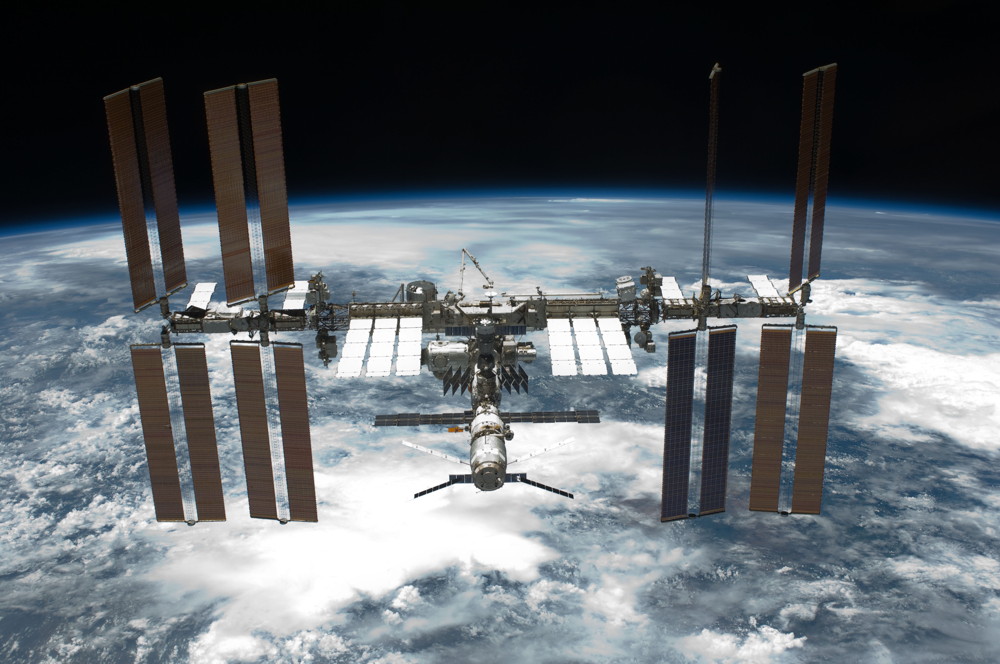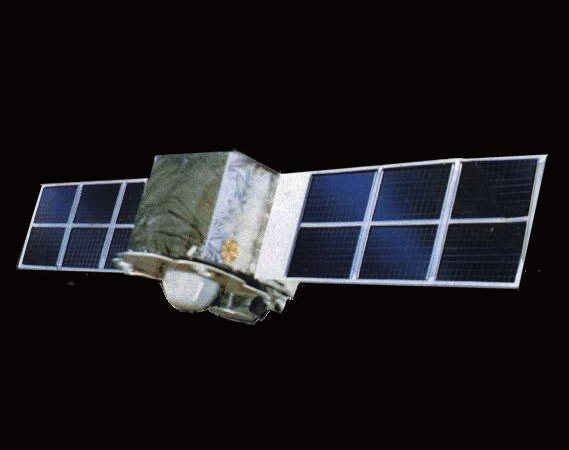Space Station Dodges Debris From Destroyed Chinese Satellite

This story was updated on Jan. 30.
The International Space Station fired its thrusters Saturday (Jan. 28) in order to steer clear of orbital debris from China's 2007 anti-satellite test.
The dodging maneuver was required to avoid space junk from the Chinese satellite Fengyun 1C, which peppered low-Earth orbit with an estimated 3,000 pieces of shrapnel when it was intentionally destroyed by China five years ago. The remaining debris has required several similar avoidance maneuvers by the space station in recent years.
Rocket thrusters on the space station's Russian-built Zvezda service module fired at 6:50 p.m. EST (2350 GMT) in a 1-minute, four-second burn to slightly raise the laboratory's orbit, leaving it on a path that reaches just over 251 miles (404 kilometers) above Earth at the highest point, NASA officials said in an update.
Saturday's maneuver was "designed to place the station at the correct altitude and trajectory for future visiting vehicle activities and to avoid a repetitive coincidence of possible conjunctions with a piece of Chinese Fengyun 1C satellite debris," NASA officials explained.
A conjunction is what scientists call instances in which space debris will fly close enough to the station to cause concern. Since the space station orbits Earth at about 17,500 mph (28,164 kilometers per hour), even a small piece of orbital debris can cause serious damage if it hits. [Photos: Space Debris & Cleanup Concepts]
The Fengyun 1C satellite debris had the potential to cause seven conjunctions with the space station, so steering the $100 billion safely into the clear was required, according to an earlier NASA update.
Breaking space news, the latest updates on rocket launches, skywatching events and more!
The space station is currently home to a six-man crew that includes three Russians, two Americans and one Dutch astronaut. NASA's Mission Control Center in Houston typically orders a dodging maneuver when debris is expected to fly inside a safety perimeter, which is shaped like a pizza box, that extends about 15 miles (25 km) around the space station, as well as a half-mile (0.75 km) above and below the orbiting lab.
When there is not enough time to plan a dodging maneuver, station astronauts can take shelter inside the Russian Soyuz vehicles that ferry them to and from the station until a piece of space junk has safely zoomed by. The Soyuz capsules, two of which are docked at the station now, each seat three people and can double as lifeboats.
Maneuvers to avoid space junk conjunctions are not uncommon for the space station and other satellites orbiting Earth. Earlier this month, the space station fired its thrusters to avoid debris from a 2009 satellite crash between an U.S. and Russian spacecraft.
Space junk poses an ongoing threat to astronauts on the space station , as well as other satellites in orbit. To date, there are about 6,000 tons of space junk orbiting Earth ranging from tiny bolts and paint chips to huge spent rocket stages and dead satellites.
More than 22,000 pieces of space junk are currently tracked every day by NASA and the U.S. military's Space Surveillance Network in order to avoid collisions in orbit.
This story was updated to correct the amount of space debris currently tracked by the U.S. Space Surveillance Network to 22,000 pieces of orbital trash.
You can follow Tariq Malik on Twitter @tariqjmalik. Follow SPACE.com for the latest in space science and exploration news on Twitter @Spacedotcom and on Facebook.
Join our Space Forums to keep talking space on the latest missions, night sky and more! And if you have a news tip, correction or comment, let us know at: community@space.com.

Tariq is the award-winning Editor-in-Chief of Space.com and joined the team in 2001. He covers human spaceflight, as well as skywatching and entertainment. He became Space.com's Editor-in-Chief in 2019. Before joining Space.com, Tariq was a staff reporter for The Los Angeles Times covering education and city beats in La Habra, Fullerton and Huntington Beach. He's a recipient of the 2022 Harry Kolcum Award for excellence in space reporting and the 2025 Space Pioneer Award from the National Space Society. He is an Eagle Scout and Space Camp alum with journalism degrees from the USC and NYU. You can find Tariq at Space.com and as the co-host to the This Week In Space podcast on the TWiT network. To see his latest project, you can follow Tariq on Twitter @tariqjmalik.


